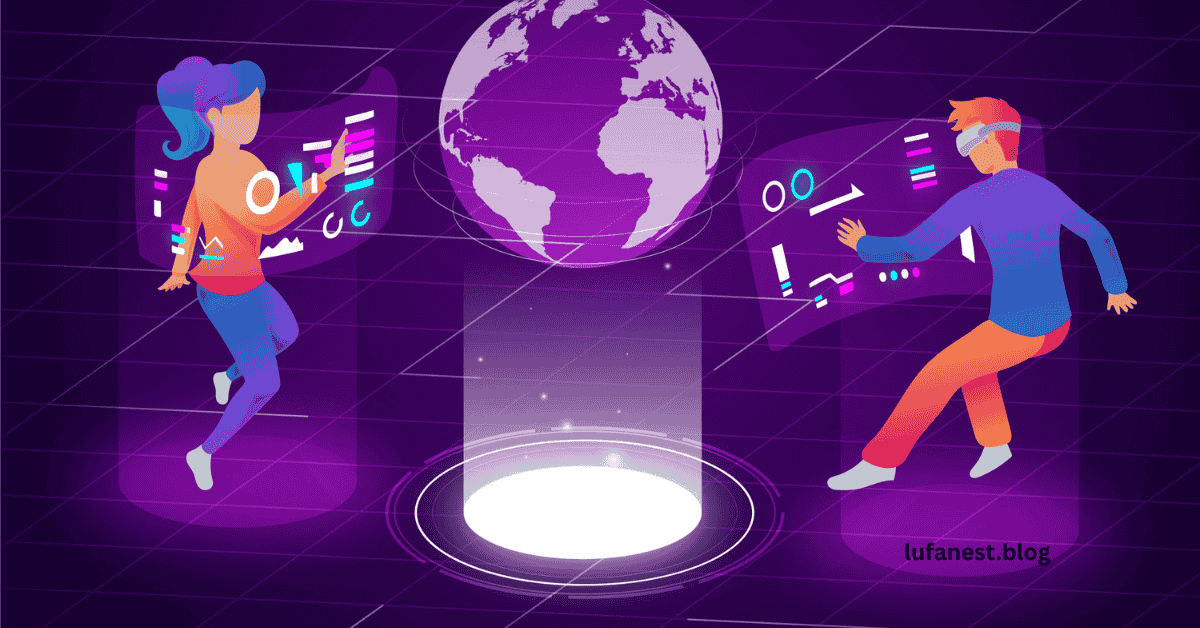Tech Giants Envision a Future Beyond Smartphones: What’s Next in Technology
Nowadays, tech giants envision a future beyond smartphones. Although smartphones have dominated the world for the last two decades, these modes are gradually changing. From augmented reality glasses by tech giants to AI-driven personal assistant devices, there is a great probability of a future without smartphones.
For example, IDC predicts that over 370 million GenAI-enabled smartphones will ship globally in 2025. This size is roughly 30% of smartphone shipments. Yet, these devices are often seen as intervening: equipped with AI, advanced sensors, and smarter UX, they point to devices smarter than smartphones.
Now the question arises, when will the smartphones be replaced? To answer this question, let’s study how big tech companies like Google, Apple, and Microsoft are inventing things for the post-smartphone era. According to Capgemini’s Top Tech Trends of 2025, some technologies focusing on replacing smartphones are:
- Gen AI-enabled Smart Devices
- Smart Wearables and Ambient Computing
- Spatial Computing AR/VR
- Brain Computer Interfaces (BCIs)
- Advanced form factors (Foldables, Roleables, Wearable screens)
Gen AI-enabled Smart Devices
The Gen AI-enabled Smart devices are taking 30% of Smartphones, the major reason for this replacement is Gen AI’s deliverables:
- Smart AI models running on hand-held devices
- Voice and Gesture Recognition
- Transitions with wearables, mainly smartwatches.
Among these deliverables, voice and gesture recognition are going to boom.
The Shipment of these modals is expected to rise to 70% by 2029 as OEMs, i.e., Apple, Samsung, and Google, are investing heavily.
Barriers
More power consumption, low-heat management systems, very-high costs, privacy & security due to high trade-offs, and complex computing are barriers to their complete implementation.
Timeframe
IDC reports that major companies are working and investing to cross the barriers, and they will succeed by 2029. By 2029, Gen AI devices will set their standards in mid-range.
Smart Wearables and Ambient Computing
Smart wearables and ambient computing are trying to completely replace smartphones with their deliverables, which are:
- Smart Rings
- Smart patches
- Smart Clothes
- Sensors in the environment to anticipate needs
Out of these deliverables, sensors in the environment to automatically detect needs and work accordingly have shaken the world.
Barriers
Miniaturization, battery timing, social acceptance, human-human interactions, health/safety, and regularity oversights are the major barriers in implementing these devices.
Timeframe
With its ever-increasing speed, it has reached the early stages of Human’s AI Pin, early smart glasses prototypes, and voice assistants. Tech Giants believe that it will be mainstream in the market by 2027-2029 in the enterprise niche earlier.
Spatial Computing AR/VR
Spatial Computing is the top trend in technology. With its deliverables, it’s gonna eat smartphones and many other innovations. Its deliverables include:
- AR Glasses
- Heads-up Displays
- Mixed reality of work and home
- Gestures and gaze replacing touch
Gesture recognition technology has defeated the barriers of space, and now gaze recognition will take over.
Barriers
Weight and comfort difficulties, Social acceptance, high costs, field of view, and Content Ecosystem are major barriers to the vast implementation of Spatial Computing.
Timeframe
With its innovations like Apple Vision Pro, Meta Quest, and Microsoft HoloLens, AR will replace smartphones’ major functions by 2030. Its wide implementation may take 10 to 12 years, but it has started revolutionizing the world.
Brain Computer Interfaces
Brain Computer Interfaces (BCIs) are a threat to smartphones, along with their successors. Its deliverables include:
- Interactions via thoughts
- Extremely low latency
- Environment without physical inputs
In these deliverables, interactions via thought will replace smartphones and then Spatial Computing.
Barriers
Safety, Invasiveness, ethics, regularity approvals, and precision are major barriers in implementing Brain Computer Interfaces.
Timeframe
Although it is in its early stages, like neuralinks, academic Labs and Pilot Projects, it’ll be mainstream viable by 2035-2040. It especially encourages tech giants to envision a future beyond smartphones.
Advanced Form Factors
Advanced Form Factors are basically smart devices, but smarter than smartphones. Their deliverables include:
- Expanded displays
- Surfaces that adapt
- Wearables with flexible screens
- Devices morphing Situationally
Devices that transform their shapes according to the situation are truly remarkable.
Barriers
Durability, Hinge mechanisms, high costs, and User experience are the barriers to their implementation.
Timeframe
As Samsung and Huawei are pushing towards foldables and rollables, they will share the tech ecosystem in the market by 2028.
Projections of Post Smartphones Era
Now the point to ponder is, Smartphones will be replaced, but when, where, and under what conditions? The answer to this question is simply crafted as follows:
2030: In 2030, many smartphone functions will be replaced, such as immersive AR/VR experiences, which will replace touch panels with gestures and gaze recognition. Gen AI will be universal in mid-to-high-end and ambient computing systems, which will detect the needs.
2035: This year will be the year of a diverse smart devices ecosystem. Brain Computer Interfaces BCIs will be taking the throne.
Geographic Variation: These innovations will be faster in developed countries and high-income regions, and slower in developing countries.
Timelines of Key milestones towards post-smartphone era:
| 2007 | I phone’s rise in demand |
| 2013 | Smartwatch growth at initial stages |
| 2019 | First AR/VR Consumer Device |
| 2025 | Gen AI Smart devices get 30% share |
| 2030 | AR Glasses i.e. Metaverse application become more common |
| 2035 | Widespread ambient computing and BCIs |
The Post-Smartphone Era
The post-smartphone era is no longer a dream or a fiction. The tech giants believe that in the near future, smartphones will be replaced by:·
- Immersive AR/VR experiences·
- Metaverse applications·
- Wearable technology·
- Smart devices incorporated in daily life·
- Natural human-computer interactions
These innovations aim to invent technology that will free a person from the necessity of a smartphone.
Wearable Tech Future
Apple Vision Pro – A Glimpse of the Future
The launch of Apple Vision Pro and beyond smartphones is opening new gateways. Apple is making progress in Future Computing. With AR and VR experiences, Vision Pro is heading towards a blend of screen and reality.

smart watch as tech giants envision a future beyond smartphones
Augmented Reality Glasses by Tech Giants
Google’s AR Glasses Project
Google’s early Glass projects faced criticism, but Google’s AR Glasses Project has shifted the trend. New projects focus on translating and learning. If successful, they could redefine communication in a post-smartphone era. Accordingly, tech giants envision a future beyond smartphones.
Microsoft and Meta in the AR Race
Microsoft’s HoloLens and Meta’s Quest devices are a step toward a future without handheld devices. Because of such devices, tech giants envision a future beyond smartphones.
Future of Human-Computer Interaction
The future of human-computer interaction will eliminate Screens and Keyboards. In that era, we’ll see:·
- Voice commands·
- Gesture recognition·
- Eye-tracking technology·
- Brain-computer interfaces (in early stages)
The success of companies and businesses will highly depend on how they incorporate AI into their systems.
AI-Driven Personal Assistant
AI-Driven Personal Assistant Devices is the gateway to the future of technology beyond smartphones. Devices powered by AI will make decisions, manage tasks, and give proactive suggestions.· Wearables like wrist watches will track health in real time.· Smart glasses will display contextual data instantly.· Personal AI agents will control home and work environments.
Natural Human-Computer Interactions
Tech Giants envision a Future beyond Smartphones – Key Predictions
- AR glasses will become mainstream by 2030.·
- AI personal assistants will replace many smartphone functions, meetings, and task reminders.·
- Smart homes and IoT will reduce the usage of mobile screens.·
- Touch panels will be replaced by Gesture recognition.
All such predictions are ensuring tech giants envision a future beyond smartphones. The next big thing after smartphones is a complete set of devices, not a single one.
FAQs on the Future Beyond Smartphones
1. What is the next big thing after smartphones?
The next big thing after smartphones is not a single device, it’s a complete set of devices. Some of those are AR glasses, wearable tech, and AI-driven personal assistant devices.
2. Will smartphones disappear completely?
No, they will lose their importance and serve as secondary devices. Their complete disappearance needs a lot of time.
3. What are Apple and Google working on beyond smartphones?
Apple is investing in Vision Pro mixed reality headsets, while Google is launching an AR glasses project. Both aim for the post-smartphone era.
4. How will human-computer interaction change?
Interactions will shift from touchscreens to voice, gestures, and even eye-tracking. The future of human-computer interaction will focus on natural communication.
5. Is wearable tech the future?
Yes. The wearable tech future includes smartwatches, AR glasses, and health-focused devices. They will be the most important devices replacing smartphones in near future.
Conclusion: Tech Giants Envision a Future Beyond Smartphones
The tech giants envision a future beyond smartphones. AR glasses, Gen AI-powered Smart Devices, Brain Computer Interfaces, and wearable devices are leading towards the post-smartphone era. While barriers still exist, the experts are struggling hard to cross these barriers.

